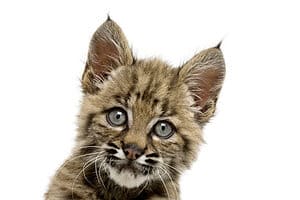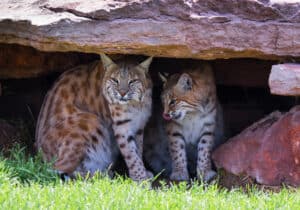Bobcats are extraordinary wildcats with great vision and hearing that help them hunt at night. They are solitary animals that have multiple dens and mark their territory.
Are you ready to learn more about if bobcats have tails? Keep reading and discover fun facts about these medium-sized North American cats.
Do Bobcats Have Tails?
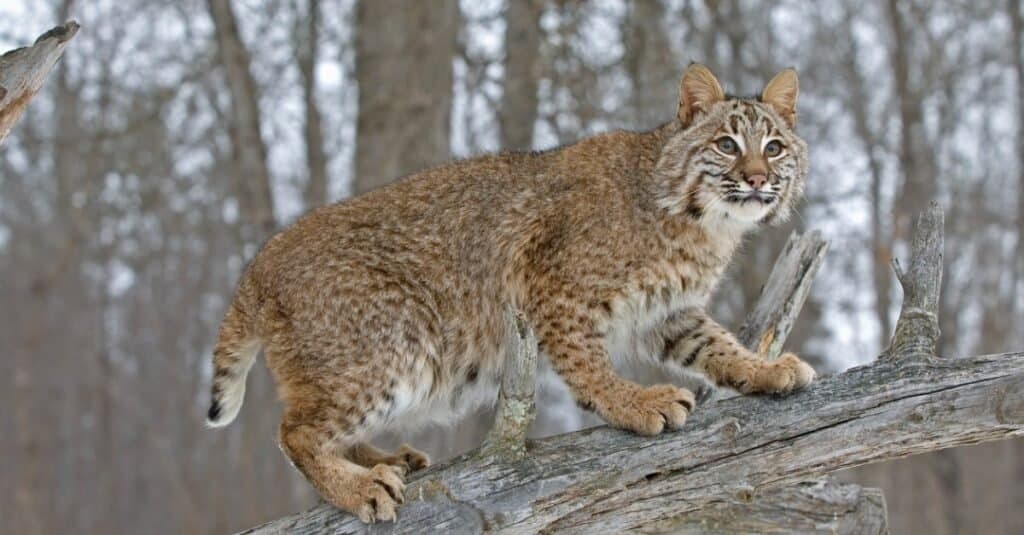
Bobcats have tails, but they aren’t very long.
©iStock.com/JohnPitcher
Yes, bobcats have tails, but they aren’t very long. Compared to other wild cats like lions and tigers, bobcats have short tails. Typically, a bobcat’s tail grows between 1-4 inches long. However, sometimes, it can grow past 8 inches, although this is rare. These wild cats have a genetic mutation that keeps their tails short, which helps with balance and climbing. Hence, they don’t need long tails.
How Can You Tell a Bobcat From a Cat?
It can be hard to tell a bobcat apart from a regular domestic cat. They look a lot alike, especially domestic short hair since some have the same spotted grey coat. However, bobcats are larger with a distinct tail, and they have prominent cheek ruffs and black fur tips in their ears.
Bobcats have a stout and short body that helps them jump high. There is a size difference depending on where bobcats grow up. Bobcats that live in colder regions with harsh winters develop thicker coats and grow slightly larger, while bobcats in warmer conditions stay smaller.
The biggest difference between a bobcat and a cat, apart from their size, is their variation. Bobcats have similar coats with minimal variations; however, house cats are very unique. Some have long fur, while others have short fur. Some cats also have thick orange coats, while others are spotted.
What Scares Away a Bobcat?
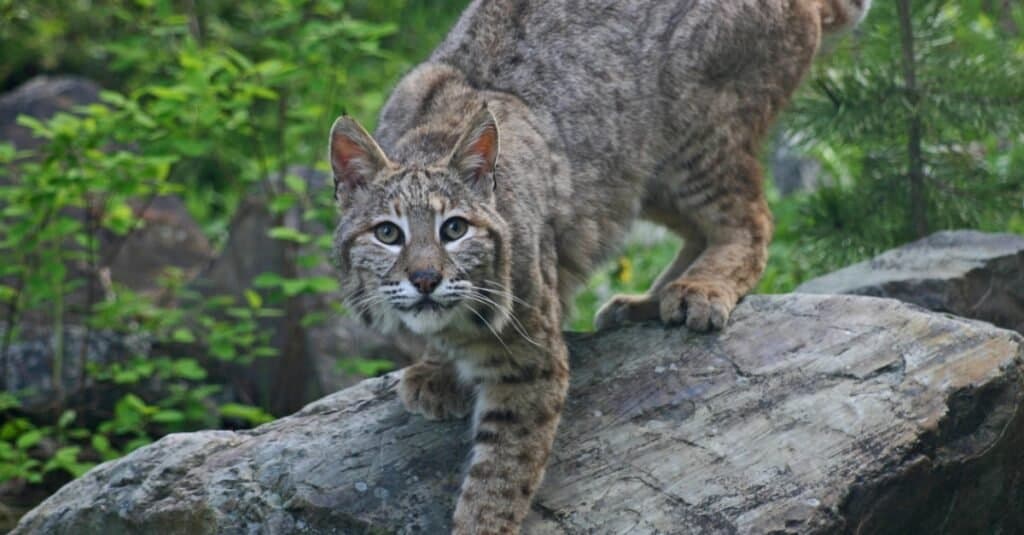
Bobcats won’t attack larger prey, so the noise should scare them away.
©iStock.com/Anita Elder Design
Bobcats are a lot more scared of you than you are of them. While this is true, you can still scare them away with a few tricks. First, if you spot a bobcat in your home or their territory, never turn your back on them or run. Usually, though, bobcats don’t stay long when discovered by humans. If they stay and growl or snarl, walk slowly backward while making eye contact. If you can, make as much noise as possible.
Typically, bobcats won’t attack larger prey, so the noise should scare them away. If you want to keep them away from your land, you can use traps, but always look at your state’s laws since they are protected in 10 states. You can also try sensor sprinkles that turn on jets of water in your yard when sensors detect an animal in the area.
What Kind of Wild Cat Has a Long Tail?
Many wild cats have long tails. However, the most common long-tailed wild cat in North America is the mountain lion, also known as the cougar. Their tails are about two to three times larger than a bobcat’s. Mountain lion tails can grow up to 3 feet long, sometimes longer. These wild cats are also a lot larger, typically reaching about 7-9 feet long and weighing 90-160 pounds. They are native to the Americas and every common in Canada and U.S. states like Colorado and Washington state.
Another common wild cat with a long tail is the jaguar. North American jaguars are native to North and South America but are at risk. Their population is steadily declining. They once roamed throughout the U.S. but were almost eliminated by 1960. Female jaguars are smaller than males but are tough and quick. Their tails are between 1.5 to 3 feet long, and they are the largest cat species in America, easily weighing close to 300 pounds.
What Looks Like a Bobcat but Has a Shorter Tail?
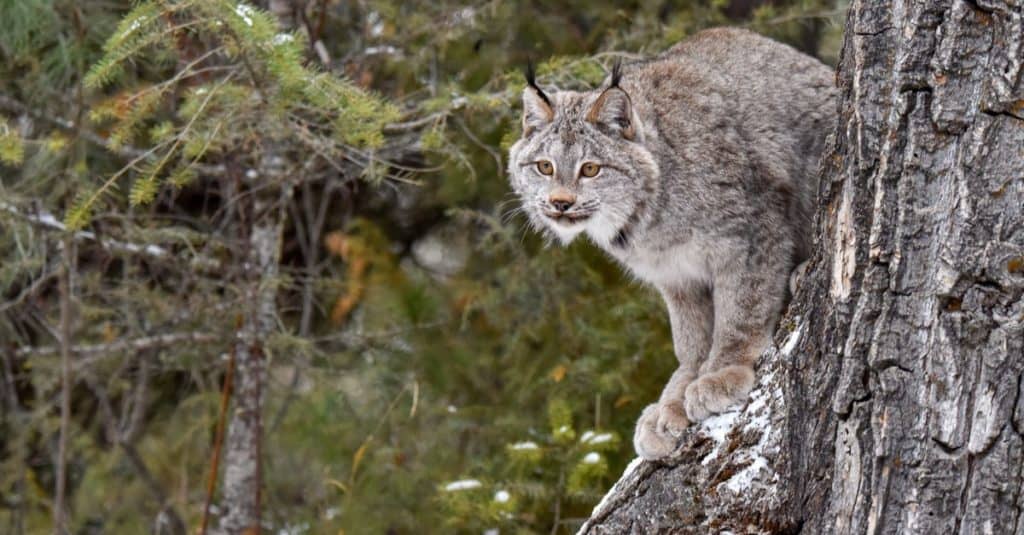
Canadian lynxes have a similar build to bobcats.
©Evelyn D. Harrison/Shutterstock.com
Did you know there are wild cats with shorter tails than the bobcat? Canadian lynxes have a similar build to bobcats, but they have larger paws made to withstand snow and colder climates. They have stubby tails, rarely reaching 5 inches long. The tip of their stubby tails is black and fluffy. These medium-sized wild cats are great hunters, swimmers, and runners. They have long and pointed ears with black tips matching their tail. Bobcats are leaner, and while some live in colder regions, they prefer warmer places. Canadian lynxes, though, prefer the snow because that’s where their main food source, the snowshoe hare, lives. They travel to where the hare population moves.
Up Next:
- Bobcats in Texas: Types & Where They Live
- Bobcat Size Comparison: How Big are Bobcats?
- 10 Incredible Bobcat Facts
The photo featured at the top of this post is © iStock.com/twildlife
Thank you for reading! Have some feedback for us? Contact the AZ Animals editorial team.



